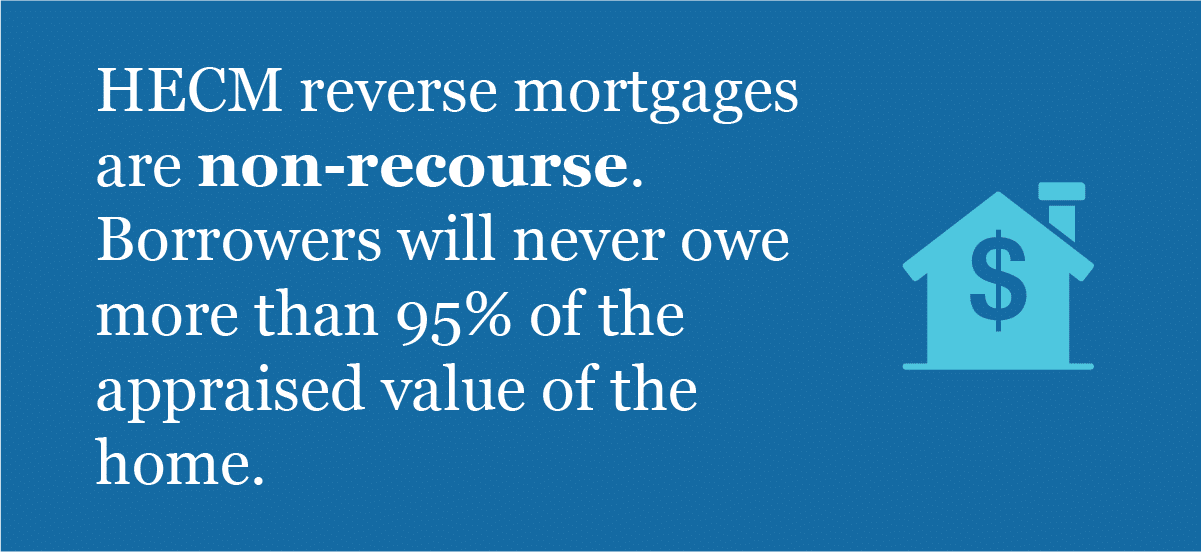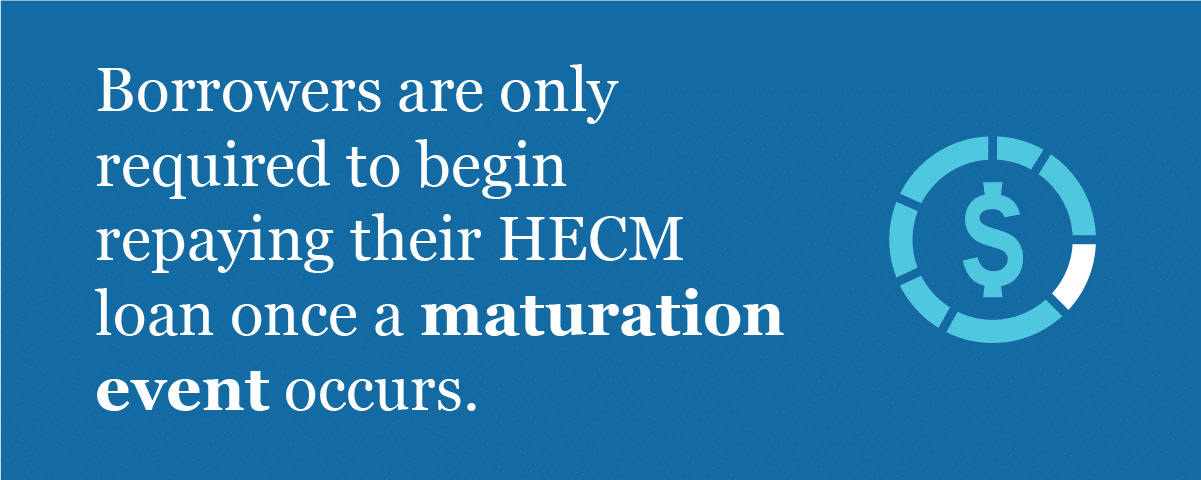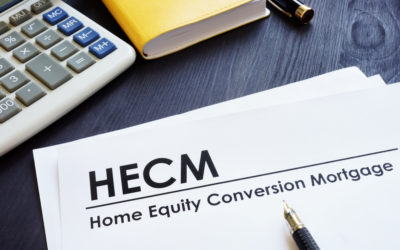Amortization describes the process and rate that a loan can be paid off over time. When a borrower takes out a loan from a lending company — like a reverse mortgage lender — they are responsible for paying off both the principal value of the loan as well as the interest (and fees) that accrue over time.
The rate at which their balance decreases or increases over time is shown by the loan’s amortization. Like other loans, a reverse mortgage also has an interest rate that is applied to the principal amount borrowed, which increases over time.
In this post, we’ll explain how reverse amortization works, what it means for your finances, and how a reverse mortgage can be a helpful way to fund your retirement plans.
KEY TAKEAWAYS
- Amortization schedules show how a loan is paid off over time. Reverse amortization, however, shows the way that interest accrues on a reverse mortgage over time.
- Reverse mortgage amortization includes features like interest, fees, mortgage insurance, and closing costs. A reverse mortgage amortization schedule might also include the home’s projected value.
- The HECM program insures reverse mortgages, so even if the loan’s value exceeds the value of the home, a borrower never owes more than 95% of the home’s appraised value.
- Heirs responsible for a loan once it has become due and payable may sell the home, pay off the loan to keep it, or simply walk away.
What is reverse amortization?
Reverse mortgage amortization, or reverse amortization, is the process over time that causes the balance of your loan to increase. The interest rate you secure on your reverse mortgage determines the amount that your reverse mortgage will amortize over time; the higher the interest rate, the greater the total value of your loan.
- A reverse mortgage — commonly called a Home Equity Conversion Mortgage, or HECM — is an innovative way to help fund your retirement. It allows borrowers to access the equity they’ve built up in their homes and use it as a source of cash flow, as either a lump sum, monthly payments, or a line of credit.
A reverse mortgage amortization schedule is a way that reverse mortgage lenders can demonstrate the rate of the loan balance increase to borrowers. Often, an amortization table — see our example further down — will be shown to borrowers during the application process for or signing of the loan. This table may also include factors like mortgage insurance, annual fees, closing costs, and any other regular expenses associated with the loan.

Additionally, an amortization table may include an estimate of the amount of equity available in the home, and the size of the line of credit that borrowers have access to if they choose to use their reverse mortgage proceeds as a line of credit.
It’s also important to note that reverse mortgages are non-recourse loans. That means that, even if the total balance of your loan exceeds the appraised value of your home, neither the borrower nor their heirs will ever owe more than the appraised value of the home. This makes reverse mortgages a safe and stable option for many retirees looking for an additional source of retirement income.
How does reverse mortgage amortization work?
In the case of a traditional loan or mortgage, amortization refers to the method and amount by which a loan may be repaid over time. For example, when paying off a traditional mortgage, borrowers may start by paying down the interest before they begin making payments on the principal — the actual amount that they took out.
However, reverse mortgages are distinct from traditional mortgages in that they utilize reverse amortization. Rather than the borrower paying down the balance over time, the balance increases as interest is applied to the balance. If the borrower has elected to take out a line of credit as part of their funding method, the amount of available credit increases along with the total size of the loan.

When a borrower takes out a loan from a lender, such as a reverse mortgage lender, they are liable for repaying both the loan’s principal as well as the interest (and fees) that accrue over time. Reverse mortgages are no different, with the exception of the innovative non-recourse feature, which ensures that borrowers and their heirs are never responsible for more than the appraised value of the loan once the loan becomes due and payable.
Reverse Amortization Table Schedule
Below, we’ve included a simplified example of a 5 year amortization table. In this imagined scenario, a borrower takes out a reverse mortgage on their home worth $100,000. They receive $50,000 as a lump-sum advance, and leave the rest as a line of credit. Below, in the sample reverse mortgage amortization schedule, you can find the amount that this borrower will owe in interest along with the total balance on their loan over time.
| $50k Advance | 5% Interest Rate | |
| Year | Interest | Balance |
| 1 | $2,500 | $52,500 |
| 2 | $2,625 | $55,125 |
| 3 | $2,756 | $57,881 |
| 4 | $2,894 | $60,775 |
| 5 | $3,038 | $63,813 |
Note that the above example does not include every cost that might be associated with a reverse mortgage. These may include:
- FHA mortgage insurance
- Origination fees
- Closing costs such and inspection fees
- Taxes
- Credit checks
Fortunately, GoodLife reverse mortgages are designed to be user-friendly and low-cost, to ensure that our customers get the best value on their loan. And, because of the non-recourse nature of reverse mortgages, borrowers never owe more than 95% of the appraised value of the home when purchased through the HECM program. The rest of the value of the loan is covered by mortgage insurance.
Getting Started with Reverse Mortgages
If you’re looking to get started with a reverse mortgage, these articles can help guide you through all aspects of the process.
Guide to HECM Loan Reverse Mortgage Limits

When is a reverse mortgage due and payable?
Unlike traditional mortgages and other loans, reverse mortgages only become payable after they reach a maturation event. A conventional loan, like a traditional mortgage, requires monthly payments as part of the terms of the loan. However, reverse mortgages work the opposite way: they pay you on a monthly basis (or in a lump sum, or line of credit).

However, the loan does become owed back to the lender once a maturation event occurs. Several different things may count as maturation events:
- The death of the borrower
- The borrower moving out of the home
- The borrower no longer using the home as their primary residence
- Other violations of FHA HECM terms
Borrowers can also choose to make monthly payments on their reverse mortgage even if they have not reached a maturation event; however, they are not required to do so.

Reverse Mortgage Heirs’ Options
If a reverse mortgage becomes due and payable due to the death of the borrower, the borrower’s heirs have the opportunity to decide which steps to take next depending on what suits their own preferences and financial situations. First, heirs can decide whether they want to pay off the loan.
They have 30 days to make this decision. If they do choose to pay off the loan, they have between 3 and 12 months to pay it off. Reverse mortgage borrowers’ heirs have the following options once the loan becomes due and payable:
- Sell the home: If the home is worth more than the loan balance, heirs may keep the remainder after the loan has been paid off.
- Retain the home: As mentioned, borrowers must pay the lesser of either the value of the loan or 95% of the value of the home if they wish to retain the property.
- Walk away: Heirs can simply allow the property to foreclose without owing anything.
Note that once the borrower passes away, it is important for heirs to contact the lender to finalize their next steps. If heirs allow for voluntary foreclosure of the home, this will not negatively impact their finances, including their credit score.
Summary
Amortization describes the rate at which a loan is paid off; reverse amortization, like reverse mortgage amortization, works oppositely: it describes the rate at which the loan accrues interest and other fees and charges over time, which must ultimately be paid back at the end of the loan’s term.
- Be sure to download our full, free HECM guide to learn more about the reverse mortgage program.
Fortunately, even if your reverse mortgage loan exceeds the value of the home, you will never owe more than 95% of the home’s appraised value, thanks to the HECM program. If you have more questions about reverse mortgage amortization, feel free to reach out to a GoodLife Reverse Mortgage Specialist, who will be happy to help you decide whether a HECM is right for your retirement.

 1-866-840-0279
1-866-840-0279


